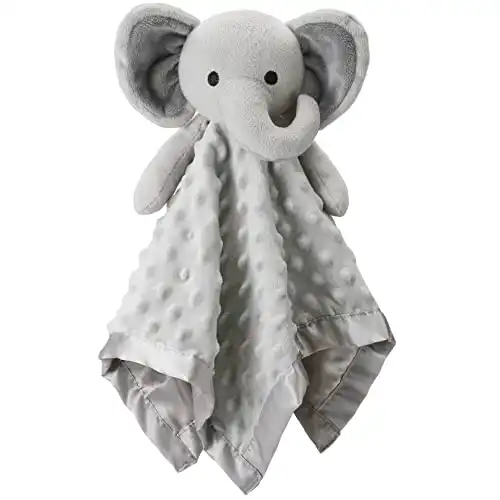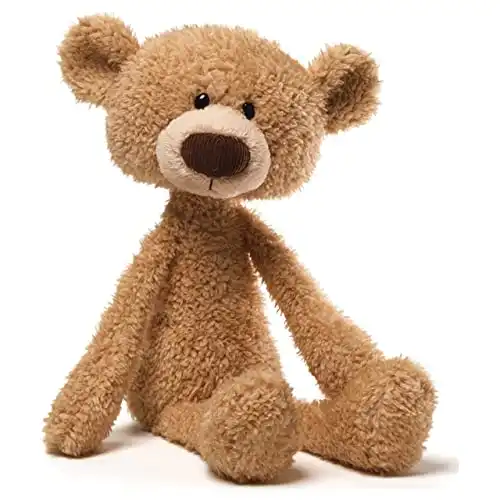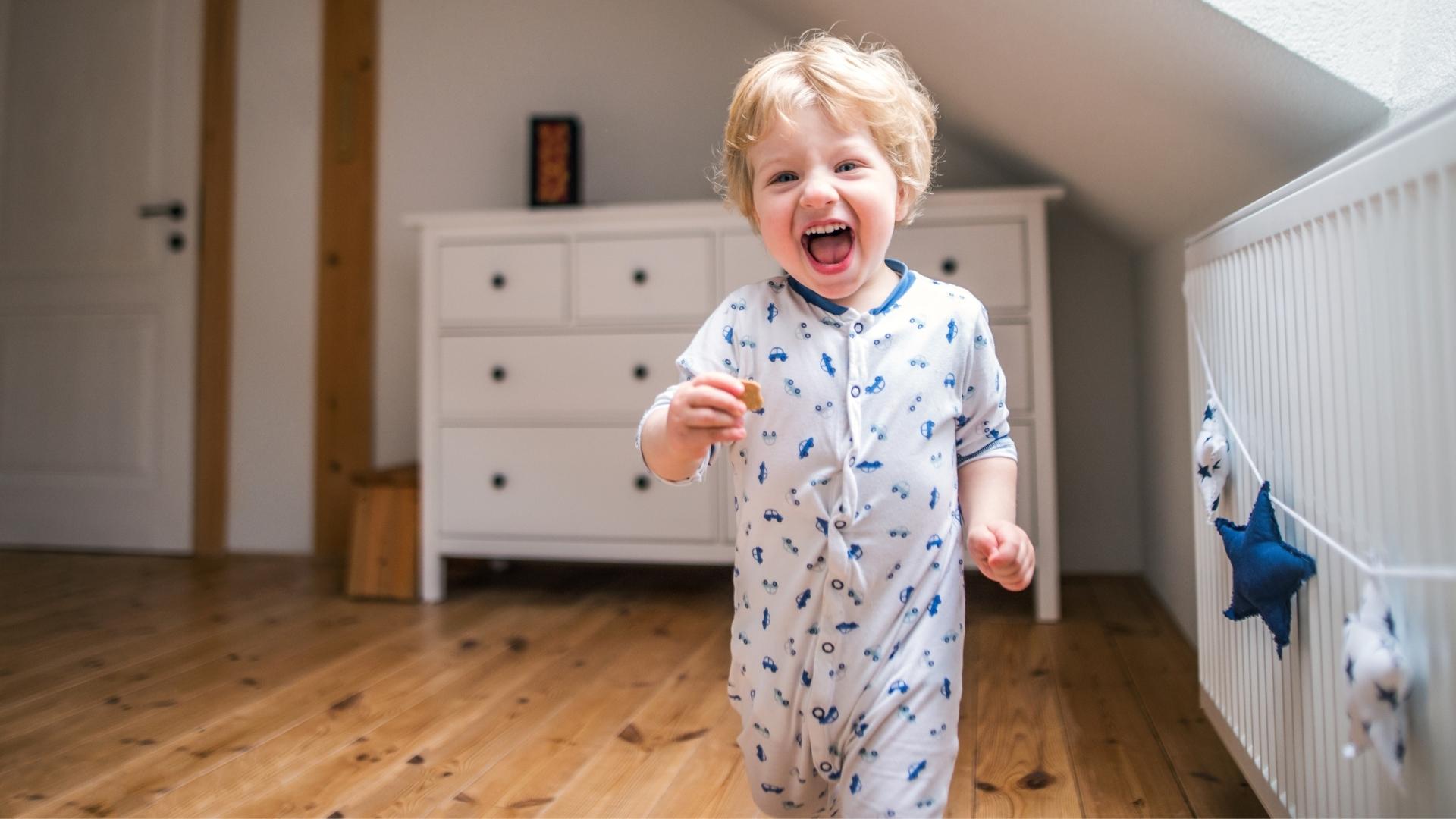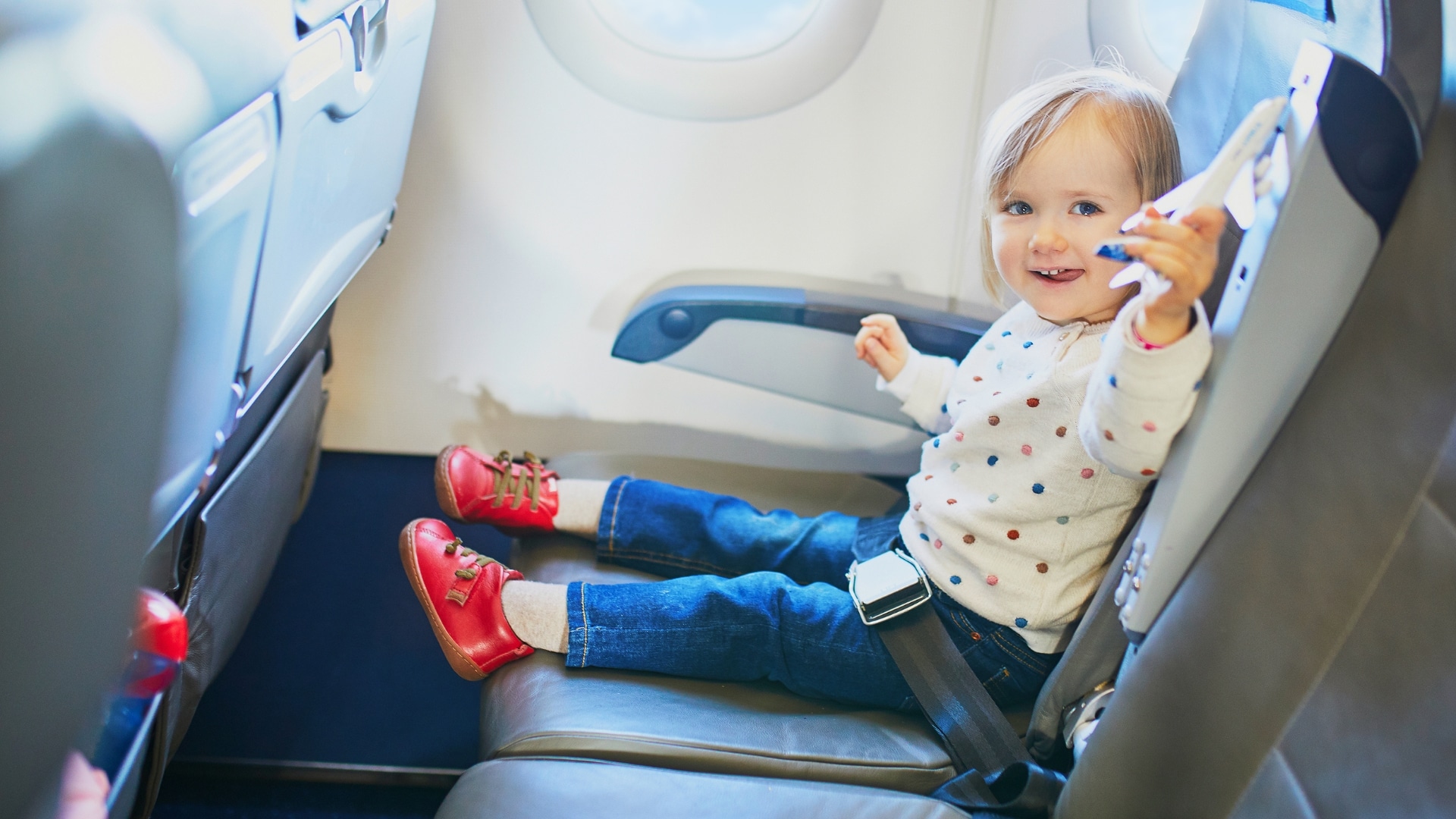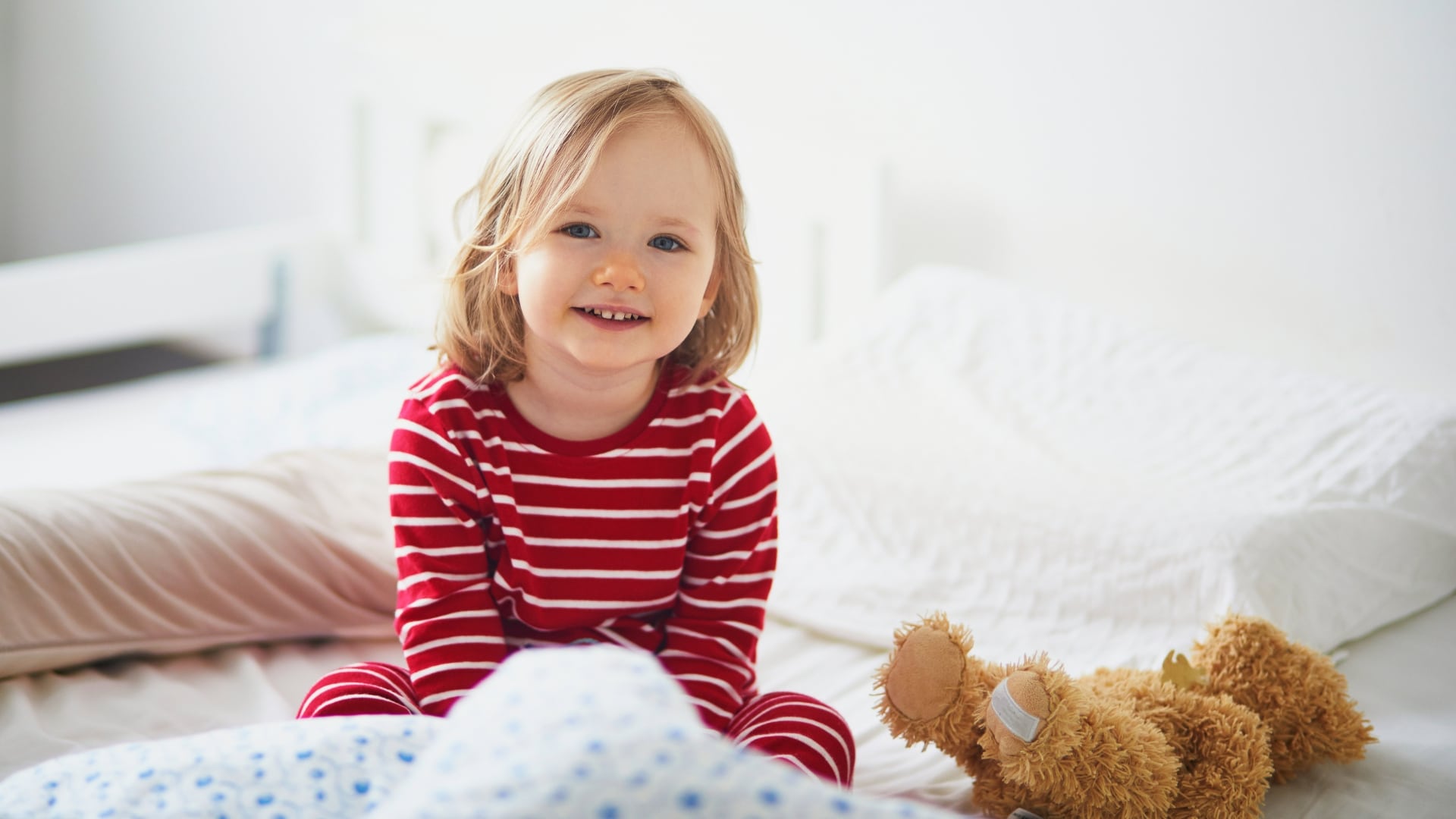As a parent, it’s important to understand the role of a lovey in your child’s life. Although it’s a simple item, a lovey holds great significance in your child’s early years especially as it represents more than just a plaything.
In today’s article, I will share how to introduce a lovey safely, identify when baby can sleep with a lovey, talk you through the benefits of having a lovey, as well as answer the most frequently asked questions I’ve had about these precious comforters!
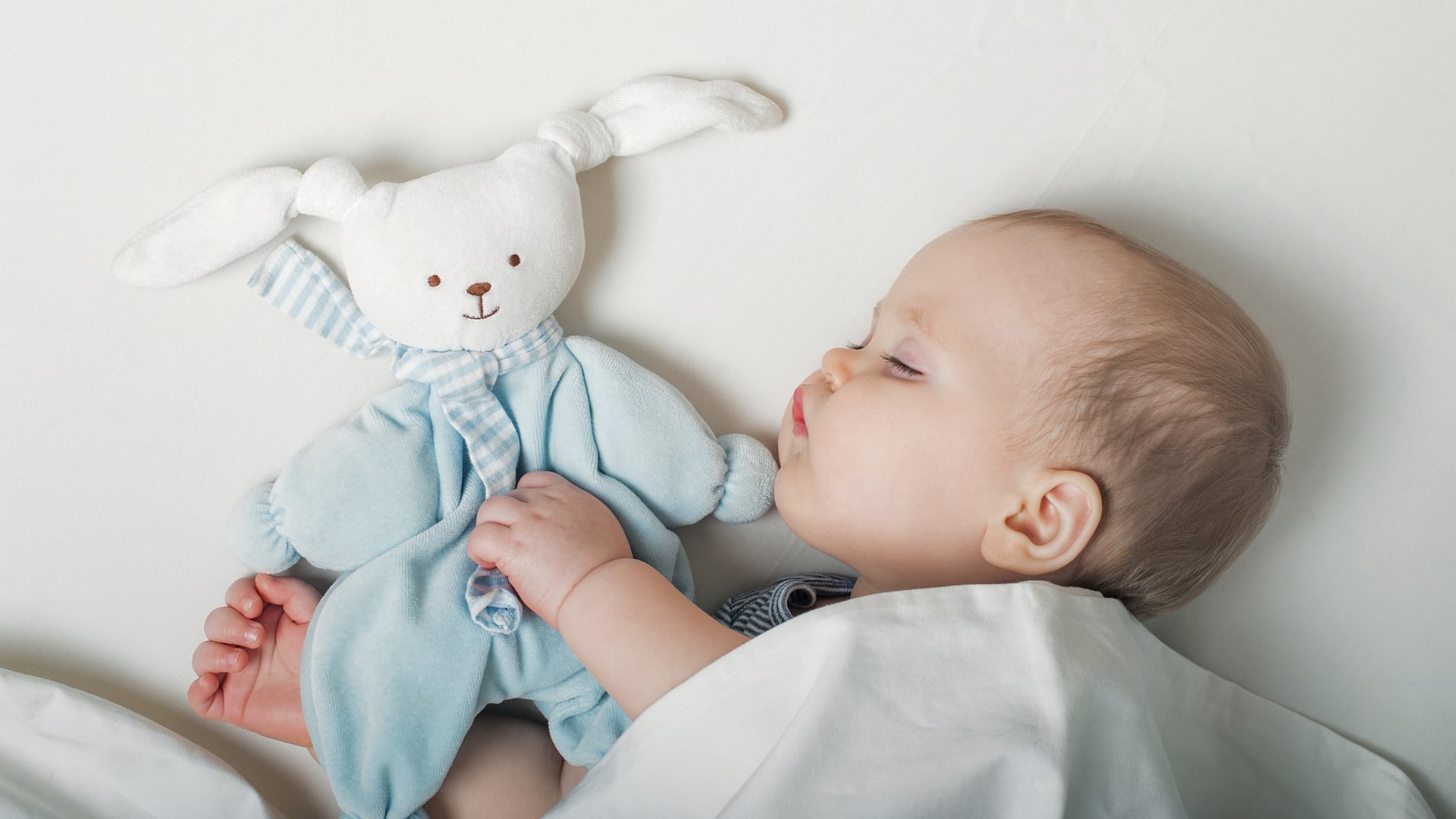
Table of Contents
What Is A Lovey?
A lovey is a comfort item your child may become attached to for a sense of security. It can be anything your child finds comforting such as a soft toy, an old muslin, a pacifier, a blanket, or one of your old tops.
Whatever the chosen object, a lovey will help your child move from dependence to independence by assisting with their emotional regulation, particularly if your little one struggles with separation anxiety or distress.
When Can Baby Sleep With Lovey
To ensure safe sleep practices, and minimize suffocation risk and sudden infant death syndrome (SIDS), you should not let your baby sleep with any loose objects or blankets in their crib before their first birthday, this includes a lovey.
After your baby’s first birthday, it’s safe to introduce a lovey when baby sleeps as this is when the risk of SIDS decreases significantly.
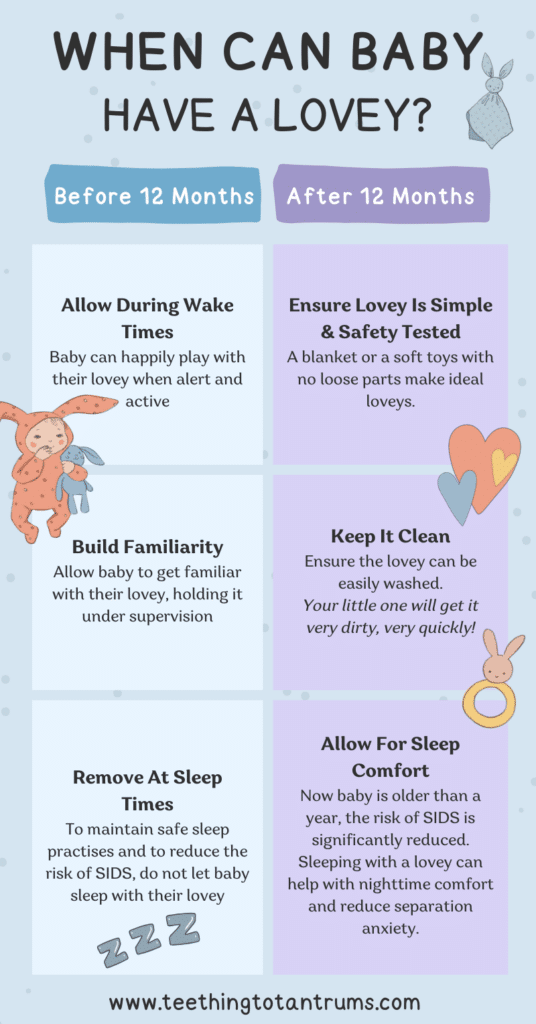
NOTE: The American Academy of Pediatrics (AAP) provides specific guidelines to ensure safe sleep practices for infants here if you would like to learn more: Safe Sleep Practices.
When Can Baby Sleep With A Stuffed Toy?
For the first year, you must keep the crib clear of blankets, pillows, and stuffed animals. This will minimize the risk of suffocation and entanglement, which are especially dangerous during infancy when your baby’s ability to move independently is limited.
If your baby’s chosen lovey is a soft toy, you need to ensure that they are at least 1 year old and that the soft toy itself is safe for purpose…
This means no loose parts, no button eyes, and no loose threads or holes where stuffing or beads can fall out.
If your baby is attached to a particularly well-loved stuffed toy, ensure you check it regularly for holes and sew up any areas of concern before the toy falls apart.
Ensure the toy is cleaned regularly to keep it hygienic and finally, verify the toy is designed for your child’s age range and meets current safety standards.
With a selection of adorable characters to choose from (lion, elephant, dolphin, cat, rabbit to name a few!) these delightful loveys are perfect for little ones to find comfort in. With a double layer of satin and minky fabric, baby will love the variety of texture and sensations this toy has to offer.
As a bonus, they are also machine washable for when the inevitable happens!
What Is The Best Lovey By Age
An attachment to a lovey normally develops around 8-12 months of age and introducing a lovey to your baby’s sleep routine can be a comforting milestone, however, you must always consider your little one’s safety.
As babies develop, the type of comfort item they can safely sleep with will also change, so to help you decide what lovey is suitable, here’s a guide tailored to different ages, ensuring safety and coziness for your little one:

- Birth to 6 Months: No loose items are safe in the crib for newborns due to the risk of suffocation. A wearable blanket or swaddle is the best option for comfort.
- 6 to 12 Months: Introduce a small, soft toy or baby blanket while your baby is awake and remove it during sleep times. This helps them to bond with the lovey safely.
- 12 to 18 Months: At this age, a toddler can safely sleep with a lovey, like a small stuffed animal or thin blanket. Make sure it’s breathable and free of loose parts.
- 18 Months to 2 Years: Children may form strong attachments to their loveys, like stuffed animals or blankets. Encourage them to upgrade to a small, durable lovey that can withstand frequent washes and the rough and tumbles of toddler life.
- 2 to 3 Years: Toddlers enjoy a sense of independence. A medium-sized stuffed toy or a favorite blanket can be great nursery and sleep companions.
- 3 to 4 Years: Preschoolers might like variety. Offer choices like different stuffed animals or character-themed blankets as they continue to seek comfort in familiar objects. They may often choose a different soft toy to sleep with each night.
- 4 to 5 Years: At this age, your child’s lovey is a familiar friend. It can be a larger stuffed toy or a blanket they’ve had for years, something they find calming and can snuggle with.
NOTE: You may be surprised by their choices too, as some children of this age form attachments to objects that are not considered ‘cozy’, such as a book, a football, or a favorite piece of clothing. My son had 8 different cricket balls lined up next to his bed!
How To Introduce A Lovey
Introducing a lovey often happens naturally, but you can help your baby form an attachment by doing the following:
- Select the Right Lovey: Choose a lovey that’s safe and soft, easy to clean, and has no loose parts. Softness and safety are crucial as they provide comfort and ensure your baby’s well-being during use.
- Infuse Your Scent: You can infuse the lovey with your scent by sleeping with it yourself first. This creates a comforting and familiar aroma for your baby, which can help your baby to settle more easily.
- Introduce During Daytime: Initially, introduce the lovey to your baby during awake times. This is essential if your little one is younger than 12 months. Allowing your baby to explore and play with the lovey during the day helps to build an attachment. It’s vital to supervise these interactions to ensure safety. This process lays the foundation for comfort but without the risks associated with unsupervised sleep.
- Place in the Crib: Once your baby has developed some attachment to the lovey, and is over 12 months old, place it in the crib during bedtime and nap times. The lovey should become a positive sleep association for your baby.
- Consistency is Key: Be consistent with the lovey’s use. Always give it to your baby at bedtime and nap time after the initial introduction. This regularity supports the development of a strong attachment and can ease separation anxiety. A consistent routine signals to your baby that it’s time to sleep.
Looking to get your little one to sleep quickly and effortlessly? Check out my Bedtime and Nap Cheat Sheet and master the art of making daytime naps and bedtimes as seamless as possible.
A bedtime & nap cheat sheet so good your little one will ask you to put them to bed...
Laura Williams "This is a life saver! I'm so glad I downloaded your bedtime & nap cheat sheet. My little one actually asked me to put him to bed last night! Unbelievable! Thank you so much!"
Click Here For The FREE Cheat Sheet
What Are The Benefits Of Having A Lovey
Loveys, often known as security blankets or comfort objects, can be beneficial to both babies and parents as they provide a sense of calm and familiarity that can aid in self-soothing.
They also:
- Help children transition through developmental stages
- Ease anxiety in stressful situations
- Foster independence and security
- Help balance emotional self-regulation and resilience
- Help children self-settle at nap and bedtime
You may find that when your baby is feeling anxious or is in an unfamiliar environment, the scent and texture of a lovey can help them feel more secure.
This comforting effect can make transitions, such as bedtime and nap times, easier as they come to associate the lovey with sleep time.
A lovey can also serve as a consistent presence, assisting in the regulation of emotions and reduction of separation anxiety. Babies and toddlers starting daycare can gain great comfort from their lovey.
In my experience, incorporating a lovey into the nightly bedtime routine can greatly help your baby to start to bond with the lovey and find it easier to transition to sleep without help from you.
This not only benefits your baby by providing comfort but can also offer you peace of mind knowing your child feels content and secure.
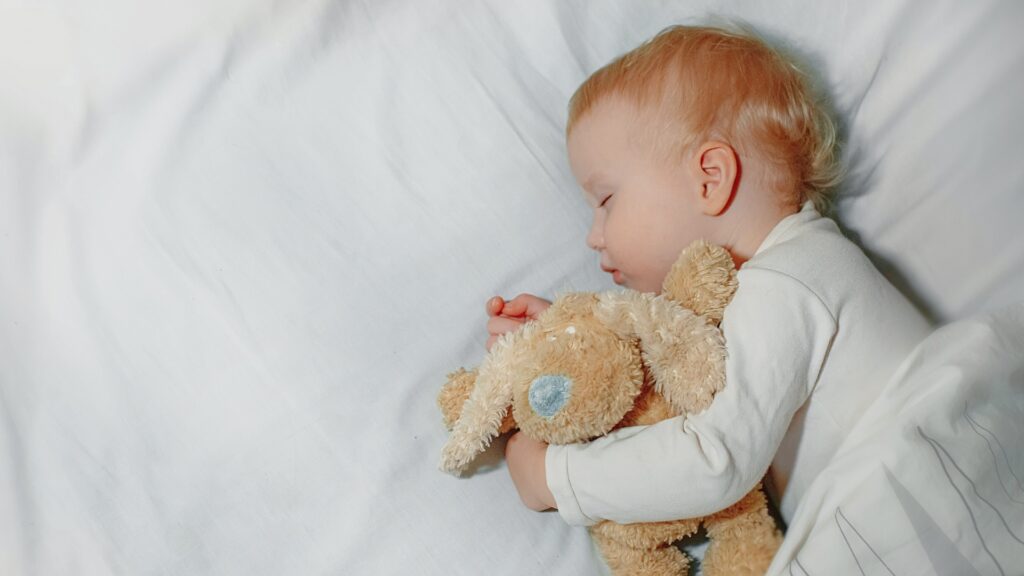
When To Take Lovey Away
There will come a time when you may start to think about needing to remove your little ones lovey. However, the AAP recommends that you should not forcefully remove a lovey from a young child.
In truth most children as they mature naturally drift away from their lovey.
For me, it is always crucial to recognize your child’s development stage and appreciate the role your child’s lovey has in their lives.
If you feel that your child’s attachment to their lovey is starting to interfere with their day-to-day routine I would recommend gradually restricting the use of the lovey to certain times of the day such as during quiet time or when getting ready to sleep.
If your child asks for their lovey outside of your designated times, tell them that their lovey is waiting for them at nap time or bedtime or that the lovey is waiting by the door for when they go out.
Experts agree that most toddlers will stop needing their lovey between the ages of 3-5 years and that letting this take its natural course is best for your child’s emotional well-being.
The exception is that if your toddler’s chosen lovey is a pacifier then you should consider weaning them off it from 2 years of age.
REMEMBER: A lovey is a positive thing and even the AAP states that every child “needs” a comfort object in their early years for emotional support. Rest assured that your little ones’ attachment to their lovey is perfectly normal and that they will give it up when the time is right for them to do so.
Frequently Asked Questions About Loveys
When introducing a lovey, the prime concern is always your baby’s safety. Here are answers to common questions parents may have.
Q: At what age is it safe for a baby to sleep with a stuffed toy?
A: You should wait until your baby is at least 12 months old before letting them sleep with a stuffed toy. This precaution aligns with safe sleep guidelines to reduce the risk of SIDS. Before this age, it is best to keep the crib free from any objects that could pose a suffocation threat.
Q: Can baby have a pacifier and a lovey?
A: Yes, a baby can have both a pacifier and a lovey. While pacifiers can be introduced at birth, ensure that the lovey is introduced as a comfort item when your baby is awake and only accompanying sleep when over 12 months old.
Q: Is it safe to leave a lovey in the crib?
A: After your baby turns 12 months old, it’s generally considered safe to leave a lovey in the crib. You should not leave a lovey in baby’s crib when they’re sleeping before this age. It’s crucial to regularly inspect the lovey for any signs of wear or damage and replace it if necessary to prevent potential choking hazards regardless of your child’s age.
Q: What type of lovey is recommended for a young infant?
A: When the time is right to introduce a lovey, choose one that’s soft, has no small parts or attachments, and is specifically designed for young infants. A soft blanket or cuddly toy work best.
Super soft, very cuddly and the perfect companion to young children, the GUND Teddy Bears never fail to be toy box favourites for years to come!
Q: How do I ensure my baby’s lovey is safe and won’t cause suffocation?
A: To ensure a lovey is safe, select one that’s lightweight, breathable, and can’t cover your baby’s face. Regularly inspect it for loose threads or parts that could pose a choking risk. Washing the lovey frequently can also help maintain hygiene. If you’re concerned about a suffocation risk, then remove the lovey when baby is sleeping.
Need More Parenting Help?
- Download our FREE Perfect Sleep Cheat Sheet. It’s a free, easy-to-use and proven formula designed for parents of 0-5 year olds to master the art of consistently undisturbed and restful sleep without the yelling, nagging or exhausting long-winded evenings.
- Check out our Parenting Toolbox. You’ll get access to expertly-chosen products that you can guarantee are the best for your little one and your wallet.
- Ready to create the calm, peaceful evenings you deserve? Then checkout our most popular course - The Bedtime Battles Masterclass

A bedtime & nap cheat sheet so good your little one will ask you to put them to bed...
Laura Williams "This is a life saver! I'm so glad I downloaded your bedtime & nap cheat sheet. My little one actually asked me to put him to bed last night! Unbelievable! Thank you so much!"
Click Here For The FREE Cheat Sheet
